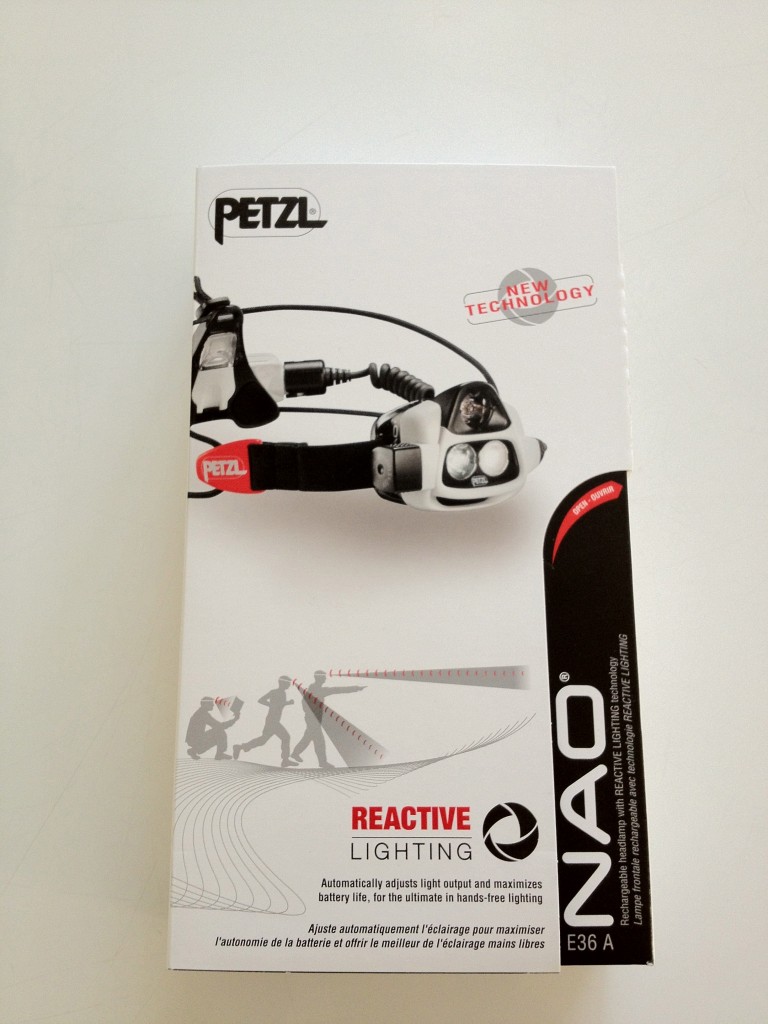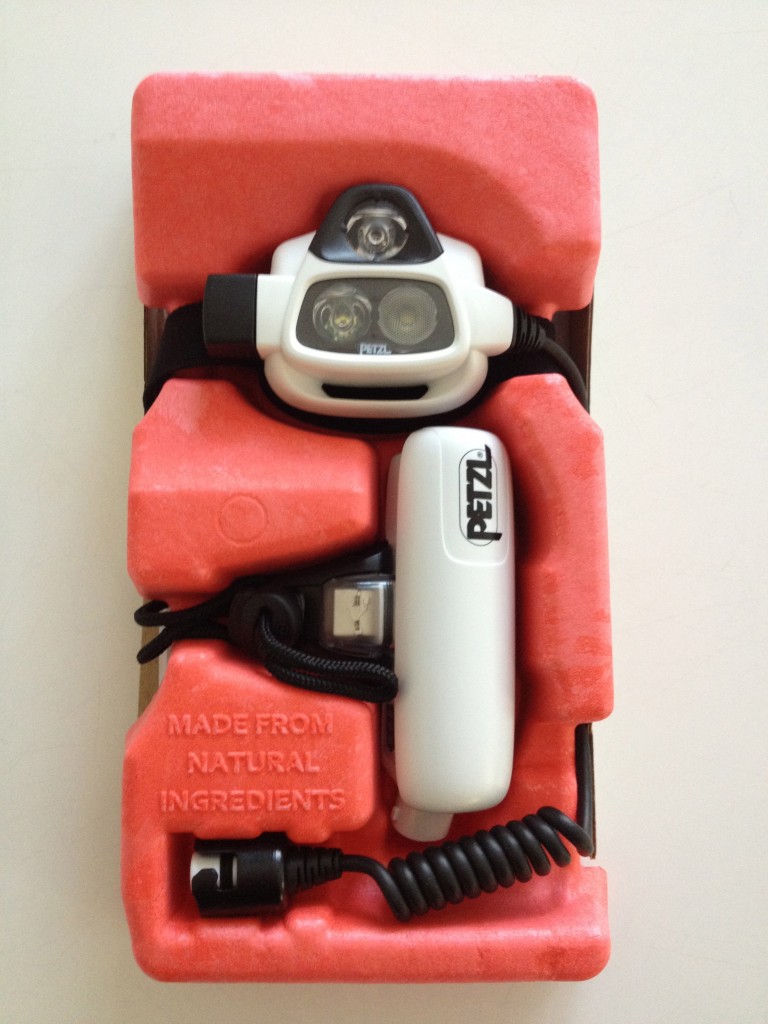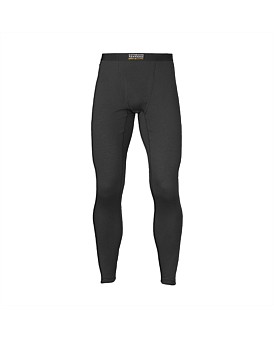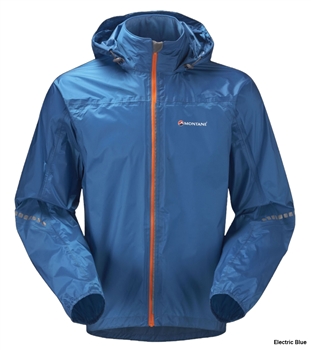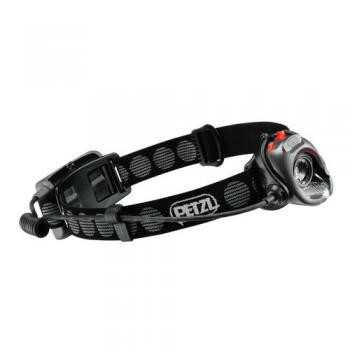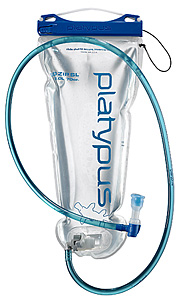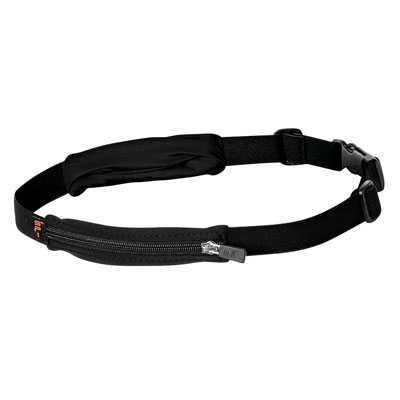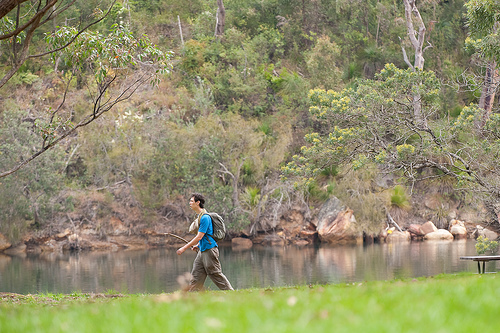Update 12.4.2012
–Lowes sell a hi-vis vest that complies with the required standard for $14.95. Yes I know this one says $9.95 but in the store it was $14.95……….
–Anaconda seem to have 20% off North Face fleece at the moment. I now own my first piece of North Face gear, and it’s very nice- $80 marked down to $64
–Anaconda also have a combined whistle and compass for $2.99 though make sure the compass works before you buy one, it’s not the best piece of gear you’ll ever buy, but you’ll never lose it. it’s huge. And yellow.
-Most current Petzl headlamps include a whistle. If you have a Tikka XP2 or similar, have a look at the headband tensioner- you might be surprised to find a whistle moulded into the plastic. I certainly was!
-I also want to acknowledge the huge help I’ve gained from others. In 2011 I was crapping myself at the huge task I’d jumped into, and probably the best source of info was Nick Weinholt’s Enduroexplorer.com website. I’ve since found out that he’s a helpful and approachable bloke too. You should read the website and particularly the training and gear list he did for the 2010 race. And although the Ultra168 guys are a whole new level of crazy (er, I mean commitment) you should read their adventures too- lots of good info there. You should also check out the gear thread on Coolrunning. Pasty has put another good summary there, and you can ask questions too!
I’ve seen a lot of discussion on various sites about the mandatory gear for TNF100, so I thought I’d share a few insights I gained last year in the hope that it will help some other competitors. Following is a list of the gear taken directly from the event website with my own explanations and links etc. It will be updated if the gear list changes, or if someone provides an interesting view that we should share here. Description of the mandatory item in italics, explanation below-
1 x long sleeve thermal top (polypropylene, wool or similar). Cotton, coolmax, lycra and any compression garment will not be sufficient even if the compression garment is called a “thermal compression garment”. You may still use compression garments however they do not replace this mandatory item. Refer to this link for an explanation.
My wife’s work distributes a New Zealand brand called SilkBody. After much searching I found that silk does have the thermal properties required, and so I used a piece of this. I had to email the Race Director Tom Landon Smith to have this approved. For the record, I love silk, but I’m going to save up for something nice instead of the fashion crime that I wore last year. Weight: 151g
Update 2 (12.4.2012)- My wife has just been to Patagonia in Sydney and purchased for me a Capilene long sleeved top. In her words- the silk weight version probably does not comply, and the lightweight version is ok for summer but probably not a Blue Mountains winter. The Midweight probably best matches the polypropylene specified in the mandatory item description.
I had an email from Tom the Race Director indicating that the fleece needed to be synthetic and that silk or wool was not appropriate. I’ve moved it to the bottom of this article because I made the mistake of thinking he was talking about the thermals however he actually meant the 100 weight fleece top. D’oh!
1 x long leg thermal pants (polypropylene, wool or similar). Cotton, coolmax, lycra and any compression garment will not be sufficient even if the compression garment is called a “thermal compression garment”. You may still use compression garments however they do not replace this mandatory item. Refer to this link for an explanation.
I used a pair of polypropylene thermals I had purchased for a trip to NZ. Fairly lightweight, these were purchased from Khatmandu- they are from the Ultracore range- linkWeight: 173g
1 x waterproof and breathable jacket with hood (plastic rain poncho etc. not acceptable)
This is probably the item that causes the most discussion. It must meet the international standard for ‘waterproofness’, have a hood and actually fit you. Yes, people have tried to get through check in with child sized items to save weight. Don’t do it. I can confirm that the lightest jacket that meets the spec is the Montane Lightspeed H2O at 132g. However- in an email from the Race Director Tom Landon Smith, he says that although this jacket will pass, he would recommend going up to the Montane Minimus which weighs 227g. Why? Because the Minimus contains Pertex fabric which is much more breathable. I’m sure the Minimus will probably last longer too! In 2011 I used a Mont jacket (different brand) which weighs about 450g, so you can save a lot of weight here. I’ve ordered the Montane Litespeed H2O Weight: 132g
1 x beanie, balaclava or buff
at Trailwalker 2010 I was given a buff about the halfway point, and it was the most glorious feeling to be putting on something so warm- it has a drawstring so it can be made into a beanie, and I’m going to use that instead of the achingly expensive snow beanie. Remember you lose a lot of heat out of your head, and it’s going to be bloody cold. Weight: 46g
1 x full-fingered lightweight thermal gloves (polypropylene, wool or similar)
I borrowed some lovely powder blue coloured gloves from my wife, it’s not too hard to find these. The borrowed gloves stayed in their packet, as I have a personal preference for non sweaty hands, and covering them up makes me very sweaty. The best compromise I have found here is some old leather weightlifting gloves that have an open mesh back. Lots of protection for your hands if you fall, but not too sweaty. Weight: 34g (nylon cycling gloves)
1 x High Visibility Safety Vest that complies with Australian Standard AS/NZS 4602:1999 -N Class for night time wear.
*I borrowed one of these from my wife’s work. You might have contacts who can loan you one of these, or you can buy them from Bunnings/ Masters Hardware etc. Not expensive, but make sure it meets the specs- and it use go OVER your pack so you can be seen from behind at night. Weight: unknown
1 x headlamp (test your headlamp on bush tracks at night prior to the event to make sure it provides enough light to both see the track and the course markings)
* My main light here is the Petzl MYO RXP. It outputs 140 lumens (160 in boost mode) and has lots of options, the big bonus being it has regulated output- this means that as your batteries wear out it will keep a constant light output- your light doesn’t get dimmer over time. I also used the hideously expensive Lithium batteries, and they lasted for several months after the event was over- I could almost view them as good value! During the day I will carry 2 small cheap lights from a $2 shop. I’ll have the good lights in my bag for checkpoint 3. Update- ‘cheap’ didn’t work- I walked into Khamandu and they had exactly what I wanted, at 5x the price I wanted to pay- I picked up 2 tiny ‘Keyring Mini Hand Torch‘ at $10 each- and that was 50% off! Yes I felt dirty paying $10 each for a 9g torch that would sell in Shenzen for 20c, but that’s life. *I have asked the Race Director for a ruling on the torch vs headlamp description, will update when I receive a reply. Weight: 10g (light until CP3). Weight: 134g (Petzl MYO RXP with batteries)

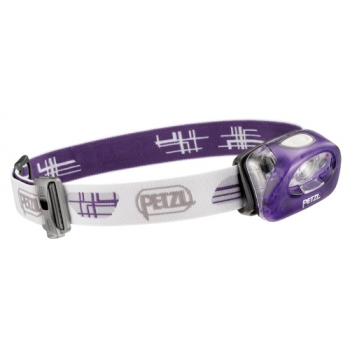
1 x small backup light in case of headlamp failure but still bright enough for you to walk by and see course markings
* I will use a Petzl Tikka XP2 for my backup light. it is perfectly ok for an event like the North Face 100 as your main light, but I’m lucky that my wife works for the local distributor so these things breed like rabbits in our house. Weight: 10g (light until CP3). Weight: 88g (Petzl Tikka XP2 including batteries)
1 x mobile phone (Telstra Next G is strongly recommended as coverage on the course is far better than any other network)
*Yes Telstra aren’t my favourite people either, but my phone is with them and the network is pretty good. Weight: 150g
1 x compass for navigation in the very unlikely event that you get lost (while we recommend a good quality compass such as the Silva Field 7, you can bring any compass as long as the magnetic needle will settle quickly and will point to magnetic North. A watch compass is allowed as long as you can calibrate it and use it correctly)
another key item with lots of questions. Yes I actually saw a few people last year get through by explaining that their iPhone has a built in compass, and you may be able to convince someone that your phone won’t run out of battery when you need it. HOWEVER- don’t go trying to bend the rules just because you can. Get a real compass. Raid your kids toy box, go to Toys R Us and have a look. Find a small compass that works and isn’t too crappy and you’re done. I bought my 2011 compass from an Australian Geographic shop- it looks a little like the Silva, but was half the price. It isn’t truly crappy and may make the cut for this year, but it weighs 48g, I’m sure I can get something smaller……. No link, does not seem to be currently available. OK, I’ve just bought this from eBay, should weigh about 10g, Weight: 48g (to be updated with a lighter one….). Weight: 10g (this is the lighter one for 2012)
UPDATE- just got an email from the Race Director which says the following- Can I use an iPhone as my compass? Answer is no. ‘It can be a watch as the gear list states but you need to be able to calibrate the watch compass correctly. The phone is no good as it is needed for calls and the more use it gets the more chance of getting wet and not working any longer. The compass is most likely to be needed if it was wet so big chance of drowning the phone especially when trying to make a call at the same time.’
1 x whistle
*most Salomon packs seem to have a whistle built in, so I have 3. You should either borrow one from someone who owns a Salomon pack, or buy one from a toy or sports store- Rebel Sport will have these. You can go there after you’ve been thrown out of Toys R Us for being disruptive. Weight: included with pack
1 x emergency space blanket, light bivvy sack or equivalent
* Salomon Advanced Skin XT Wings Super Nuclear Speedcross Blah packs have these inside, or I bought one for about $5 from Khatmandu last year. Hint- Khatmandu seems to always be on sale……Weight: 55g
1 x compression bandage for the treatment of sprains or snake bite (crepe compression bandages are fine but they need to say they are compression – for sprains and snake bites)
I asked, but never got to the bottom of what makes a suitable compression bandage- common sense says that it’s the elastic in the bandage that will provide the compression. Supplied by my wife from our medical box, but you can buy these from Chemists. Weight: 45g
1 x full box of waterproof & windproof safety matches (provided by organisers)
1 x firelighter block for emergency use only (Jiffy Firelighter provided by organisers). You will need to provide your own zip lock bag or container.
*pretty self explanatory- there will be a table at check-in with these items on it. Grab a small amount and stash them in a zip lock sandwich bag that you have brought along. You’ll need a couple of extras for this and following items. Weight: no idea, say 30g
1 x lightweight Dry Sack to keep your compulsory clothing dry (plastic bags or zip lock bags are fine but Sea to Summit Ultra-Sil dry sack is recommended)
*I bypassed buying a dry sack, and put everything in individual zip lock sandwich bags. I also wrote on the outside of each bag what the contents were, and found that I never had to look far for anything. This is important and could save time when you are cold and mentally shattered. Weight: 3g each, you’ll need about 10 of these
Capacity to carry 2 litres of water (water bladder or water bottles)
* the Salomon Super Advanced XT Wings Wooshka Skinbag comes with a bladder that holds 1.5 litres, so it doesn’t technically meet these requirements. I bought some Platypus bendy bottles and a 2l Platypus bladder and now I have more than enough capacity. Indeed, I could smuggle a cheeky red and some fine cognac on to the course. But won’t. Weight: 2l water = 2Kg, Weight: 157g (bladder)
2 x bars / food portions
* When you pull everything out of your pack after the event, you probably won’t remember why you have 2 squished muesli bars at the bottom. These were your emergency food items. Equally important- if you get into trouble, don’t forget they are there! Weight: 39g (muesli bar) Weight: 33g (packet of Gu chomps)
1 x Ziploc bag for your personal rubbish
*Oh no! You’ve just added 3g to your running weight! Don’t worry, you’ll sweat it out.
1 x set of maps and course descriptions (provided by organisers). At registration, you will be provided with one set of maps and course notes. You will need to protect these from getting wet (using item below)
* provided on A3/ sometimes A4 paper, you will put these in a safe place and forget they are there. It’s unlikely you will refer to the maps- the course is very clearly marked. Weight: 62g (I weighed another competitors handout from 2010)
1 x waterproof map case or any other way to keep your maps protected such as map contact
*The best of these I’ve seen is by Sea to Summit. I have a Sealine one that is big and bulky. The Sea To Summit should be available from most of the camping stores around Kent St in Sydney- Update, purchased this 4.4.12 for 15% off at Paddy Pallin, $25.50 apx), Weight: 128g (Sealine from 2011). Weight: 53g (Sea to Summit 2012)
1 x A5 Participant Emergency Instructions card on waterproof paper (provided by organisers)
*self explanatory. Don’t need to memorise it, just know where it is if you get in trouble. Weight: 6g (pretty sure this info is on the back of your race number, so I weighed one from another race)
1 x timing band to be worn on your left ankle (provided by organisers)
**don’t put this on too tight. Having blood gush out of your leg because the timing chip dug a hole in you is not a good look. Yes, I’ve done it. Weight: if you really want to know, email me and I’ll ask Tom the RD
1 x race number to be worn on your front and visible at all times (provided by organisers). A recommended method of securing your race number is to use an elastic waist strap like a triathlon band which allows you to easily have your number visible over the top of your outermost item of clothing. You will need to provide your own elastic waist strap if you choose to do this.
*remember if you aren’t near the front of the pack you will most likely experience a few weather changes during your event, and you’ll probably want to change clothes. If the extra fleece and waterproof pants are declared mandatory during he race you could be changing both your bottom and top clothing, meaning that the best way of having your race number visible at all times is to have it on a special belt or a SPI-Belt. For some unknown reason Running Wild NSW were giving these away at the Knapsack race, so I have one- but if you don’t you should find them at Rebel Sport/ Performance Sport or other sports stores. By the way- you should join Running Wild NSW- they have some great events! Weight: 6g as noted above + race belt weight. Weight: 60g (SpiBelt with 2 pockets)
1 x long leg waterproof pants
* I bought mine from Rebel Sport for about $40, they are Team brand. You can get some for about $20, but they were non breathable plastic and looked easy to rip, and very heavy. You may not have to carry this for the whole race, see the explanation on the website. Weight: 191g
1 x 100-weight long sleeve synthetic fleece top
* I borrowed a piece from my wife in 2011. 100 weight polar fleece is not very heavy. You may not have to carry this for the whole race, see the explanation on the website. An example of a 100 weight fleece top here, but I actually ordered this 200 weight one here because it was lighter and cheaper. Weight: unknown. Don’t want wife to catch me raiding her closet. Again. (2011). Weight: 346g (2012 bought my own)
UPDATE- I’ve just had an email from the Race Director which says this- Does the synthetic fleece have to be synthetic or can it be wool? ‘ The answer is it does need to be synthetic as synthetic fleece doesn’t get wet fibres whereas wool fibres do absorb water and can end up being wet, and therefore clammy and colder. Even though equivalent weight wool tops are probably warmer when dry.’ I’ll need to look at some polypro clothing to substitute for my silk. No big deal.
There will be at least one random gear check. Don’t try to skimp on any of the mandatory gear, it could ruin your race if you have to wait for a crew member to drive one to you- which is the best case scenario.
All of the outdoor shops seem to be on sale right now (Khatmandu permanently!) and I saw some of the mandatory gear at great prices where they all cluster around Kent St Sydney.

